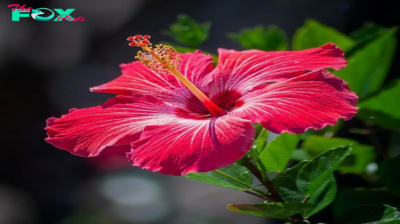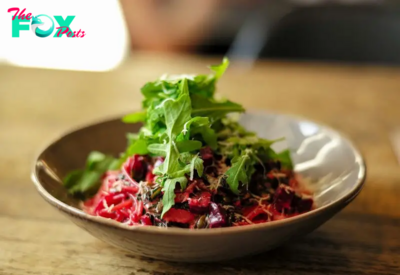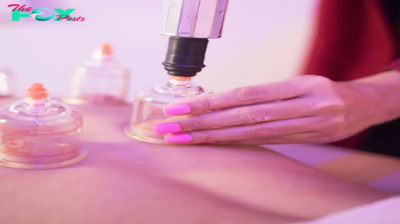Health
Here’s Everything to Know about Matcha, the Ultimate Japanese Superfood
Of the hundreds of teas that’s been brewed and enjoyed over the centuries, there’s nothing quite like a smooth, rich, and incredibly wholesome cup of matcha.
The unique tea — once only shared amongst the highest nobility in Japan — has transcended from simply being an aristocratic beverage to one of the most lauded superfoods today. Besides its long list of Health benefits, matcha is also backed by remarkable culture and tradition, which should still be celebrated, more so in our fast-paced modern world.
Like all teas, matcha is graded by quality and provenance and comes with its own set of rules for preparation. We break down everything you need to know about this verdant super-drink, as well as the best ones to shop for today.
Matcha vs green tea
Matcha is derived from the same Camellia Sinesis plant that all true teas come from, including oolong, black tea, and regular green tea. The only difference lies in the growing, harvesting, and production style.

Unlike other teas, matcha is the only form of green tea where you consume the whole leaf. These leaves are gradually shade-grown — often in near-darkness by harvest time — to crank up production of of chlorophyll and amino acids. Only the smallest and youngest parts of the plant are chosen, steamed, dried, and sorted for grade in a laborious, time-consuming process to ensure the integrity of the tea, before getting de-stemmed and de-veined to become tencha. These leaves are then stone-ground into a delicate powder, hence the name “matcha”, or “ground tea” in English.
Matcha is always a brighter and frothier green than regular green tea thanks to its high levels of chlorophyll. Equipment is an essential part of the experience and key to making good matcha. In contrast to contemporary matcha culture ( think a green tea latte from Starbucks), traditional Japanese tea ceremonies called chanoyu are centered around the preparation and offering of the superfood and involves specific tools like the chawan (tea bowl), chashaku (bamboo tea spoon), and chasen (tea whisk). Its roots in Zen Buddhism means that its preparation is still considered a mindful practice today.
Choosing high-grade matcha

High-grade quality of this product is made from leaves that are hand-picked, and is sweet/umami and smooth with no traces of bitterness thanks to its high amino acid content. Because the main area of matcha cultivation in Japan is in Uji, a city south of Kyoto, it’s considered to have the ultimate terroir and is responsible for a majority of the country’s most distinguished (and also expensive) varieties.
Ceremonial grade matcha sits at the pinnacle of quality with a vibrant green hue. It’s incredibly pricey, and should be reserved for whisking in water and not your DIY matcha latte. To make fancy drinks, cakes, and other Recipes, use culinary grade matcha, which is cheaper and wouldn’t mind being subjected to high heat and your manhandling. Colour is a telling indication of quality too, so avoid the ones that have a brownish green colour.
Matcha powder is also best mixed with water under 80 degrees Celsius. On the other hand, regular green tea is often boiled to 100 degrees Celsius, which destroys its nutritional benefits.
Benefits
To put the nutritional profile of this Japanese superfood into perspective, you’d have to drink 10 to 15 cups of regular green tea to match the nutrients of one cup of matcha.

This is because it’s higher in a catechin called EGCG, a potent antioxidant that stabilises harmful free radicals that typically damage cells and cause chronic disease and cancer. Beside being a nearly calorie-free beverage, it is also a great addition for those looking to shave grams off by also boosting metabolism and burning fat.
The high concentration of the amino acid L-theanine also promotes a state of relaxation and well-being, which makes it a much better alternative than coffee if you need caffeine but don’t want to get highly strung. Matcha is, after all, the choice of drink for monks who want to remain alert yet calm during hours of meditation.
This story first appeared on Lifestyle Asia Hong Kong
-

 Health3h ago
Health3h agoHow Colorado is trying to make the High Line Canal a place for everyone — not just the wealthy
-

 Health13h ago
Health13h agoWhat an HPV Diagnosis Really Means
-

 Health18h ago
Health18h agoThere’s an E. Coli Outbreak in Organic Carrots
-

 Health1d ago
Health1d agoCOVID-19’s Surprising Effect on Cancer
-

 Health1d ago
Health1d agoColorado’s pioneering psychedelic program gets final tweaks as state plans to launch next year
-

 Health2d ago
Health2d agoWhat to Know About How Lupus Affects Weight
-

 Health5d ago
Health5d agoPeople Aren’t Sure About Having Kids. She Helps Them Decide
-

 Health5d ago
Health5d agoFYI: People Don’t Like When You Abbreviate Texts



























